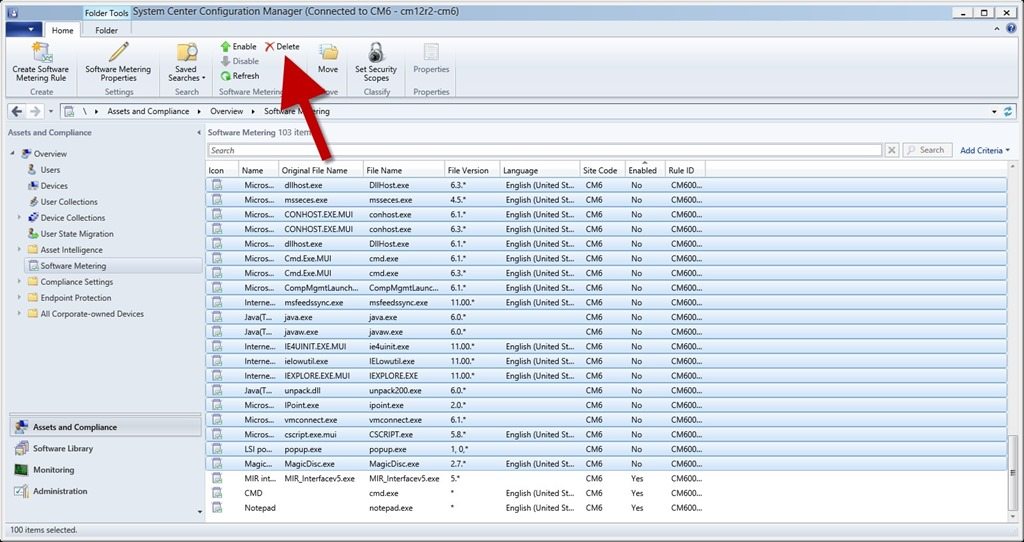Sccm Custom Software Metering Reports
Sccm Custom Software Metering Reports Average ratng: 3,9/5 2513 reviews
Learn about operations that are available in System Center Configuration Manager. Software metering in System Center Configuration. Software metering reports. Sccm report for showing when software was last used. Execution data is collected by the software metering part of the SCCM client. How to Export sccm reports?
You can use SMS reporting to run a number of predefined reports for displaying information that is related to software metering. These predefined reports are grouped into the software metering category. You can also create custom software metering reports for this category. For example, you might want to create a report that compares software inventory to actual program usage for a particular software program.
Here you can arrange the picture how you want it, then tap “set.” 8. Choose “save image” from the list below. Select the “Use as a Wallpaper” button 7. Use the share button (the one that looks like a box with an arrow coming out of it). Navigate to the “Photos” app and find the image you want as your background. Free download wallpaper bergerak untuk pc windows xp.

This type of report can help you determine if you can reduce the number of licenses that is purchased for the program. Some of the software metering reports that are included with SMS 2003 use software inventory data. To use these reports, you must first run software inventory on the site.

For more information, see Chapter 2, 'Collecting Hardware and Software Inventory.' On This Page Creating and Running Reports You must have Create permission for the Reports security object class to create or import reports. You must also have the appropriate permissions for the Reports security object class or instance to modify, delete, export, or run a report. For more information about these permissions, see Chapter 5, 'Understanding SMS Security' in the Microsoft Systems Management Server 2003 Concepts, Planning, and Deployment Guide. The default software metering reports that show data about which software programs were run do not present useful information until software metering data has been reported by SMS clients and summarized in the SMS site database. For information about creating and running SMS reports, see Chapter 11, 'Creating Reports.' Note • Software metering reporting does not function unless you have a reporting point set up and enabled with Internet Information Services (IIS).
For more information, see Chapter 15, 'Deploying and Configuring SMS Sites,' in the Microsoft Systems Management Server 2003 Concepts, Planning, and Deployment Guide. Sample Reports Several sample software metering reports are included in SMS 2003. To view these reports in the SMS Administrator console, click Reporting, click Reports, and then click Category in the details pane to sort the reports by category. Scroll down to the reports that are in the Software Metering category. For more information about creating reports and writing queries, see Chapter 11, 'Creating Reports.'
For More Information Did you find this information useful? Please send your suggestions and comments about the documentation to.
This statement gets all Tables ands their columns. Just copy the information into an Excel file and put a filter on it. This will help you to easily get the information which tables could contain your desired information.
Select Table_Name, COLUMN_NAME from INFORMATION_SCHEMA.COLUMNS I can't help you in particular because we are not using software metering and thus all of those tables are empty for me. The SCCm-Report 'Computers that have run a specific metered software program' sounds like the one that mostly fits your needs. It contains a device name, LastUsage and a couple other information. You could try to merge it with this example statement to get the primary user infomation. Select UMTR.TypeID, UMR.UniqueUserName, rsys.Netbios_Name0 from UserMachineTypeRelation UMTR LEFT JOIN UserMachineRelation UMR on UMR.RelationshipResourceID = UMTR.RelationshipResourceID LEFT JOIN v_R_System rsys on rsys.ResourceID = UMR.MachineResourceID where UMTR.TypeID = 1 and (UniqueUserName IS NOT NULL and UniqueUserName ') TypeID = 1 means 'Primary User' ('select * from UserMachineTypes') • • • •. For real, I feel your pain.